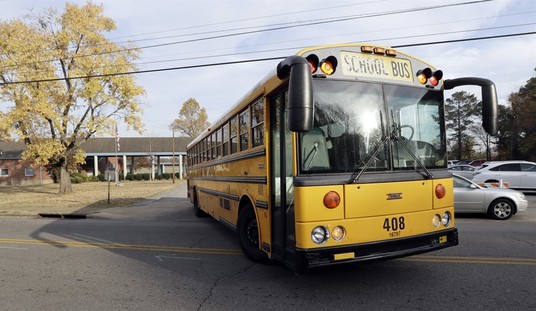The political environment seems to be favorable for Republicans to win back control of the House of Representatives this November, but it appears the Senate might be a tougher battle.
Decision Desk HQ, which does election forecastings and in-depth election results, updated their 2022 forecast on Wednesday to predict that Democrats have a 56.8 percent chance of keeping the Senate majority. This number tends to fluctuate, as for a few days this week, Republicans had a 50.5 percent chance on the model, and on June 1 they had as high as a 62 percent chance.
Of course, models are just that, and they should be taken with a grain of salt, like any polling or other forecast model. Still, it’s worth looking into their reasoning why that would be the case. In a tweet, Decision Desk HQ cited “generic ballot polls” in Georgia and Pennsylvania as reasoning why.
🚨TOPLINE RATING CHANGE🚨
Democrats are FAVORED to win the U.S. Senate.
Several new generic ballot polls, as well as race-specific polls in PA and GA, have shifted our Senate model to give Democrats a 56.8% chance of holding their majority.
More here: https://t.co/UHhMBq81nj
— Decision Desk HQ (@DecisionDeskHQ) July 27, 2022
Their model is similar to FiveThirtyEight, which has the Senate as a toss-up as well, but says Republicans are “favored” to win back the House.
It’s been clear from the start that Republicans would have a harder time winning back the Senate, as the Democrats are playing with giant war chests and have attempted to present themselves as moderates in competitive states.
While polls and models are by no means the end all be all, here’s what Republicans should be doing to secure their actual shot at winning:
At The Committee Level
The National Republican Senatorial Committee needs to keep chugging forward by not only going after President Joe Biden and his Senate allies, but also highlighting the benefits of their party’s nominee. Generally, the role of the NRSC is to highlight the negatives of the Democratic candidate, and they’ll need to get creative. As voters will be bombarded with attack ads, the criticisms will need to be unique and pointed. If they find their opposing candidate’s weak spots, especially if there is a local angle, then that’s a perfect ground for shifting the game. The NRSC is a force to be reckoned with, so I’m confident they’ll hit the Democrats where it hurts.
At The Campaign Level
Individual campaigns are going to need to do some heavy lifting. Instead of only going on the attack, campaigns are going to need to figure out why someone should support a candidate, and not just be anti-“the other guy”. For example, Democratic nominee John Fetterman in Pennsylvania and incumbent Democratic Sen. Raphael Warnock appear to be ahead in recent polling, according to Atlanta Journal-Constitution/the University of Georgia and AARP Pennsylvania. While Mehmet Oz and Hershel Walker are both unusual candidates, voters need to know their strengths as political figures outside of their prior accomplishments.
Still, they should not be afraid to play hardball. All candidates need to be highly visible on the campaign trail, and retail politics still hold value for many. Television ads and mailers are not going to carry a candidacy, but connecting with voters face-to-face will. The Biden basement strategy is not going to cut it for these races.
At The Grassroots Level
If citizens are nervous about the direction of the Senate, then they need to get involved. Even if a race is in another state, oftentimes campaigns or political groups allow anyone to make calls to voters remotely. This is an easy way for the average person to take action from wherever they’re located. Canvassing in person is also an effective method, as direct communication with voters who have not made up their mind is arguably the most tangible thing to impact election results.
There is still time for either political party to solidify their chances of controlling the Senate, but Republicans should have no trouble winning because of the poor performance of the Biden administration.














